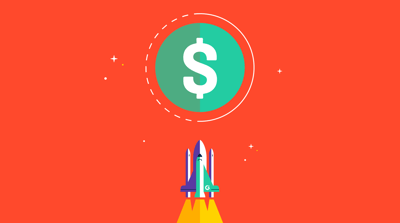November 5, 2024
 by Mary Clare Novak / November 5, 2024
by Mary Clare Novak / November 5, 2024

When presented with a task, our first thought is to explore options for the best approach.
As a sales enablement expert, the last thing you want is for your sales reps to wing it every time they communicate with a potential customer. There is beauty in systems, and creating a sales playbook for your reps to abide by as they move prospects down the pipeline will increase the likelihood of them closing deals.
A sales playbook is a resource compiled with every sales strategy, tactic, and methodology reps will use to interact with customers and close deals. Your sales playbook might include sales processes, buyer personas, lead qualification methods, calling scripts, and value demonstration guidelines.
When sales dynamics are continuously evolving, traditional methods of training and onboarding sales reps can fall short. Modern sales training platforms not only improve the learning process but also ensure your team has instant access to the sales playbook and other resources, making it easier to adopt best practices, track progress, and stay aligned with company goals.
Instead of rummaging through a pile of documents or developing their own messaging for communicating with prospects, reps can refer to their sales playbook as the single source of truth for the most effective techniques in moving a sale forward.
Below is a list of the components your sales playbook should include. Because your sales playbook is meant to serve as the primary source of knowledge for all of your sales reps, it’s going to be quite an extensive document.
When putting everything together, keep in mind the order in which your reps will need to access the information and compile it accordingly.
First, it’s important to start with purpose. With a company overview, lay the groundwork for why you and your reps are here in the first place.
Review the company’s mission, vision, and values. Cover the business’s overall strategy, the problem your company is resolving, and how your sales team fits into that bigger picture.
Next, tackle the team. Explain the roles currently on your sales team, along with their associated responsibilities, including expected activity levels and estimated quotas.
Providing details on roles and responsibilities is a good precursor to outlining how the sales playbook will help each rep achieve their goals that support the business.
Note: For the most part, the sections before this are meant to serve as introductions to the overall function of the sales team within the business. From this point forward, it’s important to provide as much detail as possible. Again, your playbook is meant to act as the be-all-end-all of sales within your business, so compile it as if it’s the only resource your reps have to close deals.
For reps to successfully sell the products or services your business is offering, they first need to understand them inside and out.
This section should describe in depth every solution your business offers, along with associated pricing models. Stress the value each solution provides, along with use cases and value demonstrations.
The solutions section can get lengthy, and that’s okay. Reps can navigate it as they need, but it might also be helpful to have a separate selling guide for each product or service you offer.
Once you have a good grasp of the solutions being offered, you need to identify who you are selling them to. Tackling these sections back to back allows reps to make immediate connections between the solution and its ideal user.
You want your reps to focus only on qualified leads, so giving them an idea of what that person looks like will guide their targeting. Include details about ideal buyers, such as their industry, position, and, most importantly, pain points. Create a list of criteria for reps to use to qualify leads so you maintain a healthy pipeline and avoid wasting time with dead leads.
Along with your buyer personas, you need to establish a buyer journey for each one. This can look different from business to business, but it typically follows three stages: awareness, consideration, and decision.

Your sales team will have a list of metrics that they measure to indicate levels of success or failure.
However, the sales playbook will only highlight key performance indicators (KPIs), which are the most important metrics that measure the overall success of the sales team. This gives reps an idea of how they’ll be evaluated and what being a “good salesperson” looks like for your business.
Your sales team's goals will always change based on current conditions, so it’s important to update KPIs to reflect that.
This section will be the heaviest in your sales playbook because it includes every detail of your selling process, from prospecting to nurturing a customer relationship.
Because selling can take many different directions, you should include a step-by-step sales process and a flowchart that gives directions and a detailed breakdown of each stage.
Here are the different parts your sales playbook should include regarding the sales process:
While those descriptions were kept brief, it’s important to offer as much detail on them as possible in your sales playbook. Identify any information the rep will need for that step, key players, and, most importantly, how to assess the opportunity in its current stage.
Offer methods that will help determine prospects' current stage in the buying process and anticipate their next move. Include various situations reps might encounter as they interact with customers and resolutions to any hiccups.
The sales compensation plan you’ve implemented at your business will affect the way your reps work.
Describe what the plan is, the structure, the percentage of base vs. variable pay, and any accelerators or decelerators. Make it clear whether base pay or variable is doing the heavy lifting in terms of what reps will earn.
This is also a place to go over how you set your sales quotas and the method you use. To make it easy on reps and motivate them to overperform, you can offer examples of what a rep would make (hypothetically) if they hit certain percentages of their quota.
With money on the mind, reps might become curious as to how they can advance in the company by getting promoted and earning a pay raise. The sales compensation plan section of your playbook might include an advancement plan, which will outline how reps can move up in the company by hitting certain milestones.
To avoid any confusion, you’re going to want consistent and uniform usage of your designated CRM tool.
Provide reps with information on what each stage within the CRM means and when to move prospects from one to the next, as well as information that’s required/optional to include. Show them how to create and analyze reports, dashboards, and custom portals.
A CRM's purpose is to track customer progress and interactions, but it’s also meant to act as a place for updated and easily accessible information on customers. Make sure that each rep is using the CRM correctly and consistently.
While the above information should get your reps through your business’ process of selling successfully, sales are not black and white, and they might still be looking for more.
Include some resources that provide additional information on sales, your customers, and the company overall. For example, case studies for each of your buyer personas can prove helpful for reps navigating difficult situations with customers.
Keep this section of your sales playbook fresh and updated with relevant information that reps can use to keep selling.
Before you build your playbook, make sure your team speaks the same language. Start with this guide to 80+ must-know sales terms.
With all of those components in mind, it’s time to construct your sales playbook. Remember, this document is meant to act as a single source of knowledge for reps (new and old) and any employee who has a role in your selling process.
Whatever you think might be helpful to any of those groups, include it. If things get a bit busy and overwhelming, use knowledge management software to document the sales playbook efficiently and make it easy to navigate.
The first step in creating a sales playbook is to gather any and all parties that should be involved in the process. Here is the typical lineup of people who will have valuable input.
When putting together your sales playbook, you’ll obviously need a few representatives from the sales team.
Get input from sales leadership, as they will need to give the final stamp of approval on everything. Include top-performing reps in the conversation, as they most likely have plenty of successful selling methods that are crucial to mention in your sales playbook.
Product marketing team members are going to be your best bet for information on buyer personas and product messaging.
Collaborate with your product marketing team to decide on messaging for each solution your business offers. Their insight on how to market your products, combined with the insight from sales, will create a combination that customers won’t be able to resist.
When putting your sales playbook together, you’ll need some input from subject matter experts within your business.
As you construct each component of the sales playbook, ask yourself who would be the best person to get advice from. For example, as you put together some CRM tips, get some input from your business’s CRM administrator.
Tip: Even with all of those groups involved in creating the sales playbook, it can be hard to keep everything on track for completion. Make sure to designate one person as the project manager so they can hold the group accountable for deadlines.
The next step is to outline the goals of the sales playbook. Is it to create a whole new sales playbook? Do you want to scratch everything and start over? Or just update an outdated section?
Whatever the case may be, make sure your goals for the sales playbook are known to all parties involved. Make it clear who is responsible for what and when they need to have it completed.
This will hold everyone accountable and keep the finalization of the sales playbook on track.
Finally, you will edit, adjust, and finalize all of the components listed above.
Don’t be too eager to adjust everything. Make sure you conduct an audit of all existing documents with information regarding the sections you’ll include in your sales playbook. Your organization may already have some valuable content.
For example, sales reps might swear by certain cold calling or email scripts that you’ll want to include so others can also use them. Implementing scripts that are proven to work will not only help reps see more success in their selling efforts, but they’ll also be more willing to approach selling with resources they’re already comfortable using.
Crafting a new sales playbook from scratch? Feel like throwing everything you already have out the window and starting fresh? That’s probably a good idea.
Instead of starting from square one, download our sales playbook template. All you need to do is fill it out.
Modern-day buyers' expectations are high, and you can’t expect to close a deal by simply offering a streamlined selling process. You’re going to need the combined power of both sales and marketing, which, when coordinated properly, can create an irresistible customer experience.
When creating a sales playbook, you'll need input from both sales and marketing, as these two departments are most responsible for finding what customers want and delivering it. Sales reps working with prospects can benefit from some marketing materials, and marketers need to have a hold on sales so they can provide reps with the content and product messaging they need.
Jordan Wahl, former Content Marketing Manager at G2, recently launched a sales and content marketing playbook and not only noted the importance of aligning sales and marketing but also came out with some killer takeaways.
“First, identify what salespeople need to do their jobs, and then determine what marketing can do to relieve those pain points.”
Jordan Wahl
Former Content Marketing Manager, G2
Communicating with prospects and customers should be a collaborative effort between sales and marketing. Your sales playbook should explicitly state when and how to use sales and marketing tactics that will enable the other team.
Even after you’ve almost finalized your sales playbook, unfortunately, the work is never quite finished. There are a couple of strategies you can continue to work on before, during, and after your sales playbook has circulated around the company and been implemented by reps.
Chances are, if you hand a sales rep the finished playbook, they probably won’t read it right away. It might sit on their desk or in their inbox for months, and all of your hard work won’t be used to its full potential.
Make sure to pair the delivery of the sales playbook with a training session on how to use it. You can conduct general training for every department that might have a hand in the selling process (sales, marketing, customer service, etc.) and then separate more specific training sessions for each department.
Run through the playbook from start to finish, ask questions, and identify any areas that need improvement.
Even if you want a fresh approach to selling, your sales team might already have a lot of information on strategies, processes, and methods they’ve seen success with. You wouldn’t want to count out their ways of selling that are proven to work.
Conduct an audit of all your current sales information and determine what should be included in the new playbook and what should be left out. This will motivate sales reps to abide by the playbook because they know it works, and it will also save you time and energy.
As with any new process in a business, you need to ask for feedback from every party involved.
Send around a draft of your sales playbook and ask for input on any and all components. You might’ve missed a cold email script that’s proven to work or a defining trait of your ideal customer persona. Whatever they might present, it’s always a good idea to get a second opinion.
Creating and implementing a sales playbook can be highly beneficial, but it also comes with its set of challenges, such as:
Your company’s sales playbook is the end all be all of the information on selling to your customers. Anything that anyone involved in the sales process should need, they should be able to find it in your sales playbook.
There’s a time and place for the “less is more,” but this is not one of them. Equip your reps with everything they need to sell, and let them do the heavy lifting.
Ready to take your sales game to the next level? Read our guide on sales acceleration and discover actionable insights that can transform your approach.
This article was originally published in 2020. It has been updated with new information.
Mary Clare Novak is a former Content Marketing Specialist at G2 based in Burlington, Vermont, where she is explored topics related to sales and customer relationship management. In her free time, you can find her doing a crossword puzzle, listening to cover bands, or eating fish tacos. (she/her/hers)
Your time is valuable, and you want to make the most of it.
 by Mary Clare Novak
by Mary Clare Novak
There's much debate in the sales industry over which sales key performance indicators (KPIs)...
 by Mary Clare Novak
by Mary Clare Novak
The highlight of any sales operation is the act of closing a deal.
 by Mary Clare Novak
by Mary Clare Novak
Your time is valuable, and you want to make the most of it.
 by Mary Clare Novak
by Mary Clare Novak
There's much debate in the sales industry over which sales key performance indicators (KPIs)...
 by Mary Clare Novak
by Mary Clare Novak


